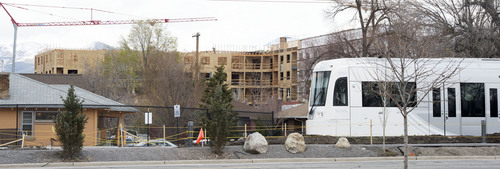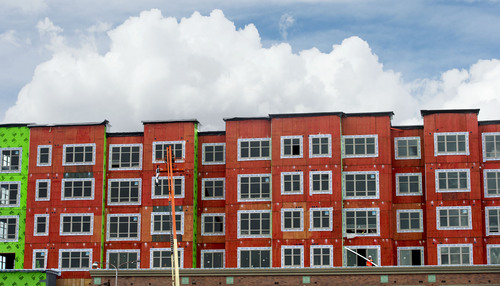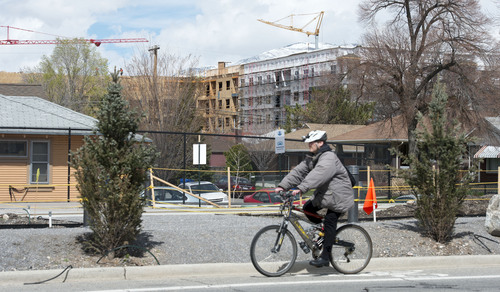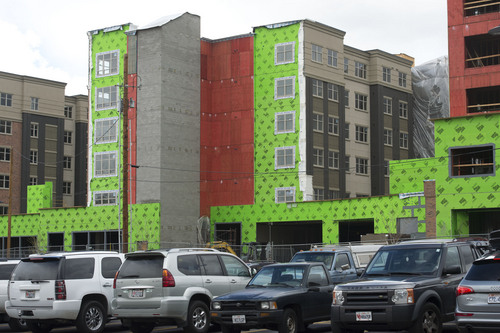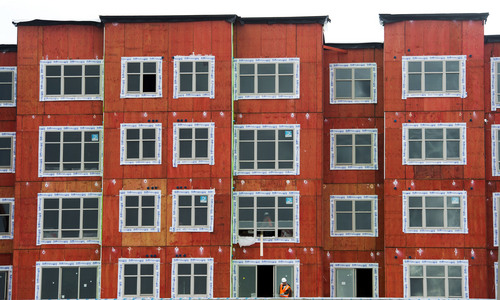This is an archived article that was published on sltrib.com in 2014, and information in the article may be outdated. It is provided only for personal research purposes and may not be reprinted.
New University of Utah research shows that people who live in compact, connected urban areas — instead of sprawling ones — live longer, are healthier, see greater upward economic mobility, use transit and walk more, and enjoy lower overall costs of living.
That may show that Wasatch Front planners are aiming in the right direction as they seek to cluster new growth in "town centers" near transit stations — and pursue more dense development instead of spreading out in new distant suburbs.
The research was released Wednesday in reports issued by Smart Growth America and the National Institutes of Health. It includes new sprawl-index scores for 221 major U.S. metropolitan areas and 994 counties, and looks at how sprawl affects health.
Metro areas in Utah rank in the middle nationally for compact urban areas, as opposed to sprawl.
The Provo-Orem metro area ranked No. 85 (the lower the ranking, the more compact an area is); the Salt Lake City metro area ranked No. 94; and Ogden-Clearfield ranked No. 119.
In comparison, the most compact metro areas nationally were New York City; San Francisco; Atlantic City, N.J.; Santa Barbara, Calif.; and Champaign-Urbana, Ill.
The most sprawling metro areas were Hickory, N.C.; Atlanta; Clarksville, Tenn.; Prescott, Ariz.; and Nashville, Tenn.
Reid Ewing, director of the Metropolitan Research Center at the U. and lead researcher for the study, said his team ranked sprawl using updated methods, then looked at how it affects quality of life.
"We found that people in connected, compact areas have greater upward economic mobility," he said. "That is, a child born in the bottom 20 percent of the income scale has a better chance of rising to the top 20 percent of the income scale by age 30."
Ewing added overall costs of living are lower.
"People in more compact, connected metropolitan areas spend less on the combined expenses of housing and transportation."
He said while housing costs are usually higher in such areas, that is "more than offset by lower transportation costs" so it is slightly less expensive overall.
People in more compact areas "have more transportation options," he said. "People in these areas choose to walk more, take transit more, own fewer cars — which is one reason transportation is more affordable — and they spend less time driving" because jobs and recreation are closer to where they live.
Ewing said people in more compact areas "have longer, healthier and safer lives."
The lifestyle translates to better health in several ways, he said.
"The risk of fatal auto collisions" is lower in compact urban areas where people drive less; fewer people are overweight because residents walk more; and air tends to be cleaner than in other metro areas because of less driving and more transit use.
David Berrigan, with the National Cancer Institute's Division of Cancer Control and Population Sciences, said the new study adds to a growing body of research on how sprawl and urban design affect cancer-related behavior.
He said Ewing's team developed "a new and more comprehensive sprawl index," which helps more clearly see sprawl's effect on health. "We're very interested in how better development strategies can help people stay healthy and active."
Ilana Preuss, vice president of Smart Growth America, which advocates improved urban planning, said the research shows "development decisions have a very strong connection to our daily lives."
"Each time elected leaders invest in roads or sewer lines, or decide where to approve new developments," she said, "our personal daily costs, our health and long-term economic opportunities are impacted."
Local officials along the Wasatch Front — through a consortium called Wasatch Choice for 2040 — have been planning how to handle an expected 67 percent growth during the next 30 years in a state where 90 percent of the people live on 1 percent of the land.
The consortium has produced plans that envision funneling much of the growth into high-density town centers built around mass-transit stations, which fit more people on less land and could cut traffic congestion, reduce pollution and even trim water use.
Gov. Gary Herbert has also launched a similar statewide initiative to figure out the future for all of Utah — not just the Wasatch Front — called "Your Utah, Your Future." —
How urban areas rank for sprawl
• Most compact and connected: 1. New York City; 2. San Francisco; 3. Atlantic City, N.J.
• Utah rankings (among 221 metro areas): 85. Provo-Orem; 94. Salt Lake City; 119. Ogden-Clearfield.
• Most sprawl: 221. Hickory, N.C.; 220. Atlanta; 219. Clarksville, Tenn.


